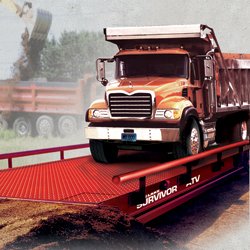Concentrated Load Capacity, or CLC, is an industry recognized rating of a vehicle or axle load scale. The rating defines the maximum load for which the weighbridge is designed as applied by a group of two axles with a center line spaced 4 feet apart and an axle width 8 feet apart. When a CLC load is applied to the weighbridge during a National Type Evaluation Program test, the NTEP tester records the displayed weight. If the scale falls within accepted testing tolerances, the scale has that CLC weight value recorded as the CLC on the Certificate of Conformance.

The CLC rating is not a measure of weighbridge strength or rigidity, because weighbridge deflection is not measured in the NTEP test. It is irrelevant if the load weighbridge sags 1/10th of an inch, or 10 inches, as long as the scale weighs within the accepted tolerance. The scale’s CLC weight rating passes in either case. A high CLC rating could be given to an extremely flexible deck sitting on load cell mounts which are capable of accurately handling the side loading resulting from a severely sagging weighbridge.
The Rice Lake SURVIVOR truck scale line boasts a 45 ton (90,000 pounds) CLC rating. With most legal highway weight limits being a fraction of Rice Lake’s rating, owners of a SURVIVOR scale can expect a long lifespan through Continue reading →


